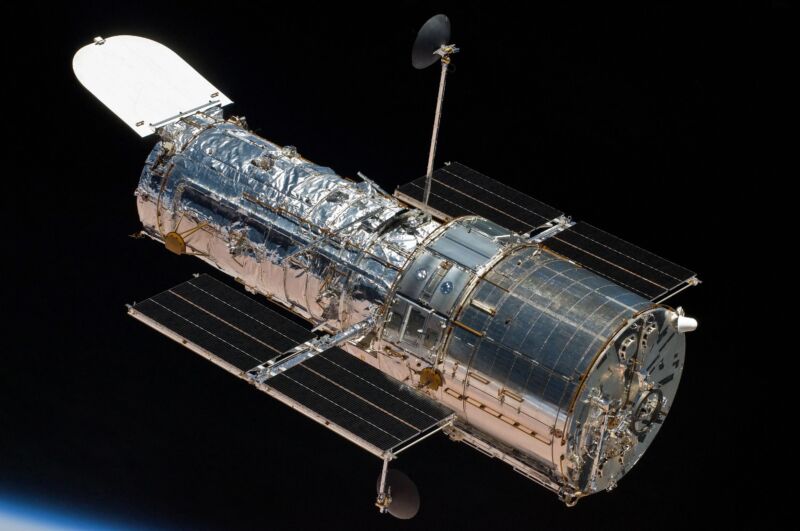
Enlarge / The Hubble Space Telescope viewed from Space Shuttle Atlantis during a servicing mission in 2009.
NASA
The Hubble Space Telescope resumed science observations on Friday after ground teams spent most of the last three weeks assessing the performance of a finicky gyroscope, NASA said.
The troublesome gyroscope is a critical part of the observatory’s pointing system. Hubble’s gyros measure how fast the spacecraft is turning, helping the telescope aim its aperture toward distant cosmic wonders.
Hubble still provides valuable scientific data for astronomers nearly 34 years since its launch aboard NASA’s Space Shuttle Discovery in 1990. Five more shuttle servicing missions repaired Hubble, upgraded its science instruments, and replaced hardware degraded from long-term use in space. Among other tasks, astronauts on the last of the shuttle repair flights in 2009 installed six new gyroscopes on Hubble.
Moving parts sometimes break
The gyros have long been one of the parts of Hubble that require the most upkeep. A wheel inside each gyro spins at a constant rate of 19,200 revolutions per minute, and the wheel is, in turn, sealed inside a cylinder suspended in a thick fluid, according to NASA. Electronics within each gyro detect very small movements of the axis of the wheel, which supply Hubble’s central computer with information about the spacecraft’s turn rate. Hair-thin wires route signals from the gyroscopes, and these wires can degrade over time.
Three of the six gyros installed on Hubble in 2009 have failed, and three others remain operational. The three still-functioning gyros are based on a newer design for longer life, but one of these units has shown signs of wear in the last few months. This gyroscope, designated Gyro 3, has always exhibited “consistent noisy behavior,” said Pat Crouse, Hubble project manager at NASA’s Goddard Space Flight Center.
Hubble typically needs three gyros to operate normally, so ground controllers shut down Gyro 3 for roughly seven years until Hubble needed it in 2018, when another gyroscope failed, leaving only three of the devices still working.
“Back in August, we saw issues,” Crouse told Ars this week. “It would sort of sporadically output some rate information that was not consistent with the observed spacecraft body rates, but it was short-lived, and we were characterizing what that performance was like and how much we could tolerate.”
The gyro’s performance worsened in November when it fed Hubble’s control system erroneous data. The gyroscope sensed that the spacecraft was changing its orientation when it really wasn’t moving. “That, then, contributed to an error in attitude that was kind of causing a little bit of drift,” Crouse said.
Automated software on Hubble detected the errors and put the spacecraft into “safe mode” two times last month. Hubble quickly resumed science observations each time but then went into safe mode again on November 23. Hubble managers took some extra time to gather data on the gyro’s health. Engineers commanded Hubble to move back and forth, and the suspect gyro consistently seemed to work well.